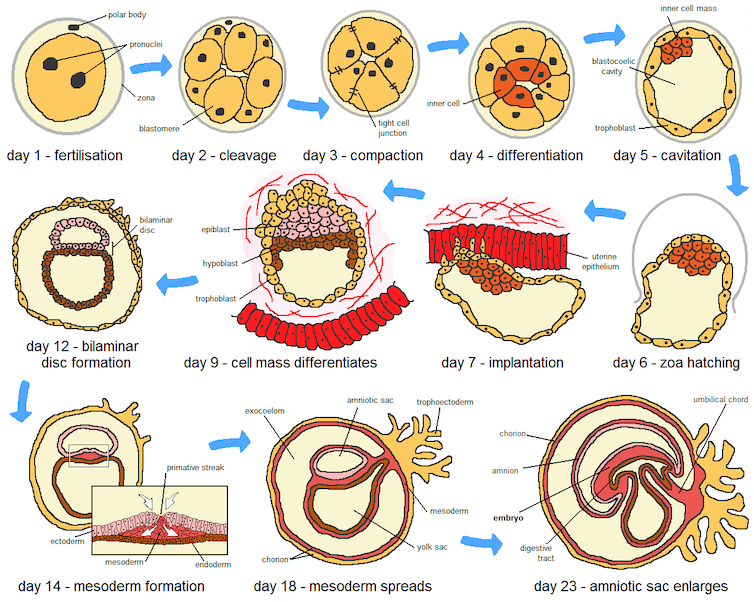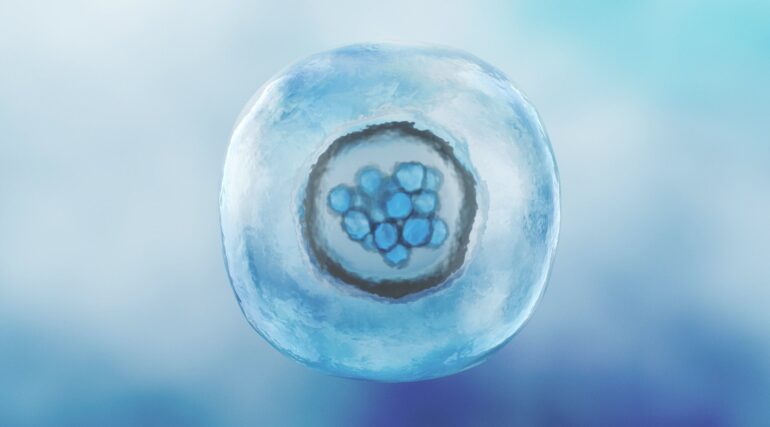Embryonic development, also known as embryogenesis, is a cornerstone in understanding the origins of life. But studying this marvel of intricate and layered biological processes in people faces considerable challenges. Early-stage human embryos are difficult to obtain. Then there are ethical issues surrounding their use. This has made it difficult for scientists to understand early human development.
However, advances in genetic engineering and molecular and cellular biology have catalyzed the emergence of synthetic embryology, a subfield dedicated to replicating and studying embryonic development in a petri dish using human stem cells. By offering new tools to explore the enigmatic earliest stages of human development, synthetic embryology can help researchers overcome the challenges of using real human embryos.
As a reproductive and developmental biologist, I develop stem cell models for embryogenesis. With these new models, researchers can also better understand conditions that affect human reproduction and development as well as maternal-fetal health, potentially leading to new therapies.
Making human embryos from stem cells
Embryogenesis begins with the fertilization of an egg. This triggers the egg to rapidly divide into embryonic cells that soon form an inner cell mass that eventually develops into the fetus and a outer layer of cells that will give rise to the placenta.
Upon implantation in the uterus, the inner cell mass develops into the three layers that will create all the tissues and organs of the human body. Concurrently, the placenta begins to form as the embryo attaches itself to the uterine wall, a crucial step for maternal-fetal connection. This attachment enables the transfer of nutrients, oxygen and waste between mother and fetus.
Synthetic embryology artificially recreates these developmental stages using human pluripotent stem cells derived from human embryos or induced from adult human cells. Like early embryonic cells, these cells have the ability to develop into any type of cell in the human body. In carefully engineered lab environments, researchers can coax these cells to form multicellular structures that mimic various embryonic developmental stages, including early organ formation.

This diagram shows the first few weeks of human embryogenesis, which begins with fertilization.
Jrockley/Wikimedia Commons
Researchers created the first human embryo model from embryonic stem cells in 2014. This pioneering model, also called a gastruloid, captured key aspects of early human development and showed that scientists can drive pluripotent stem cells to form patterned layers echoing the three germ layers and the outer layers of the embryo.
Gastruloids are easy to replicate and measure when studying early events in development. These 2D gastruloids can also help researchers precisely identify and image embryonic cells. However, this model lacks the complex 3D structure and…



